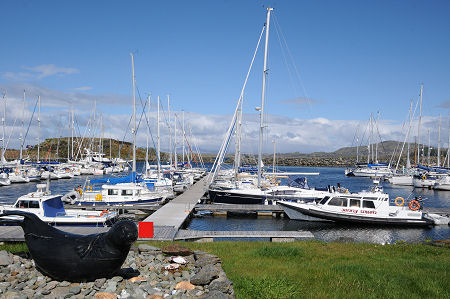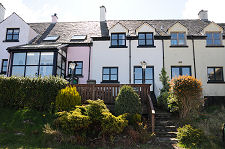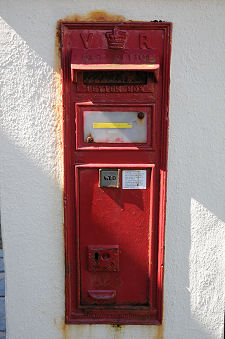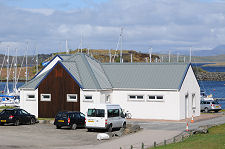 Craobh Haven Marina |
There's nothing very new about the idea of a planned village being created on a greenfield site in Scotland. You come across many settlements that owe their existence and current form (and, often, also their names) to the lairds and landowners who decided that building a village was a good way to improve the area and/or improve the income from their land in centuries past, with the boom coming during the century from the mid 1700s to the mid 1800s.
What is rather more unusual is the idea of planned village being developed in modern times. Craobh Haven, whose name is pronounced "croove haven", was developed virtually from scratch from 1983 on what was previously a rocky stretch of coast on the north shore of the Craignish Peninsula. It lies some 22 miles south of Oban and 17 miles north of Lochgilphead and the closest settlement of any significance is on the other side of the peninsula at Ardfern.
Craobh Haven was intended to become a leisure village and at its heart is a sheltered marina offering 250 services berths, plus a boatyard with a large covered workshop, a chandlery and other facilities aimed directly at those wishing to moor their boats here. Shelter for the marina was created by building rock breakwaters which double as causeways, linking the mainland with two of the three offshore islands, with a further causeway linking two of the islands.
As part of the development of the village, two areas of housing were also built. The first forms an irregular village street with a broad grassy verge on one side. With pastel colours predominating, the effect, as is clearly intended, is to bring to mind much longer established coastal villages across Scotland, and perhaps in particular villages in Fife such as St Monans and West Wemyss.
The second area of housing lies a short distance to the south and comprises an L-shaped block, again (largely) harled in pastel shades, and offering a slightly different look and feel to the village street. Facilities for those intending to stay here were not overlooked. One end of the village street is home to an arts, coffee and gifts shop called The Giving Tree. The other end of the same side of the main street used to be home to Craobh Village Stores, though when we last visited this stood empty and the business was operating from premises at the rear of the pub.
Which brings us the Lord of the Isles, Craobh Haven's village pub. This looks more utilitarian than traditionally Scottish from the outside, but the interior offers a series of spaces with much more character: plus real fires on cold days and some excellent views out over the marina.
Two objects found within the village are obviously much more than three decades old. The first is the village post box, standing outside the village stores. This carries the "VR" crest showing that it first came into use during Queen Victoria's reign, and was presumably relocated here after the village came into being. On a slight hill just to the east of the village is a stone memorial. This looks like a traditional village war memorial, but unusually commemorates just two individuals, 27 year old Captain Iain MacDougall of Lunga, killed on 1 September 1914 (or just over a month into the war), and 61 year old Lieutenant Colonel Stewart MacDougall of Lunga, and father of Iain, who was also killed on the Western Front, on 21 July 1915. This memorial presumably stood on what was a lonely corner of the Lunga Estate until Craobh Haven arrived immediately to its west in the 1980s.
Craobh Haven's development was not without its controversies and financial problems. In more recent times successive visits have also suggested mixed fortunes, with one a few years ago revealing issues about the apparent upkeep of some of the holiday homes in the village, as well as an obvious problem relating to the state of the mile long access road from the A816. It's nice to be able to report that on our most recent visit in May 2013 the access road had been resurfaced and apparently re-engineered to a very high standard, and the exteriors of all the houses were very nicely presented. The very favourable impression that resulted was due to more than just our having visited on such a beautiful day.
 One Side of the Village Street in Craobh Haven |

|
|
|
Visitor InformationView Location on MapWhat3Words Location: ///logbook.edits.above |
 Pastel Coloured Houses |
 The Deckhouse |
 Southern Housing Development |
 Victorian Post Box |





